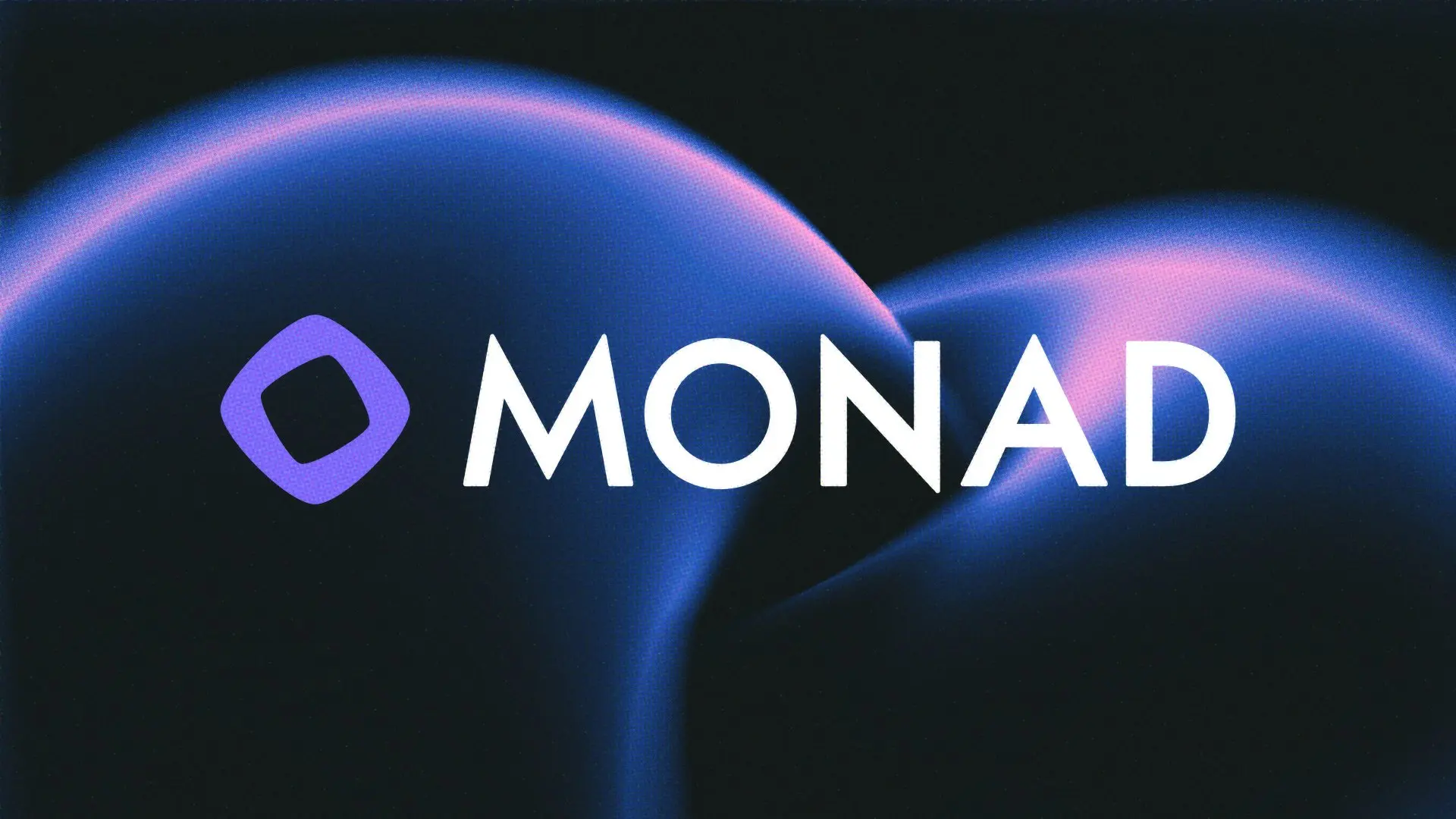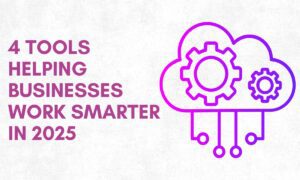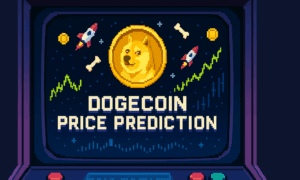The blockchain development landscape has long been dominated by the “Scalability Trilemma,” a concept suggesting that decentralized networks can only maximize two of three properties: decentralization, security, and scalability. For years, the Ethereum Virtual Machine (EVM) has been the absolute gold standard for composability, liquidity, and developer tooling. Yet, any builder who has tried to deploy a high-frequency application knows the pain: gas spikes, network congestion, and low throughput.
Enter Monad, a high-performance Layer 1 blockchain that promises to solve these inefficiencies without abandoning the EVM standards we know and love. Backed by Monad Labs, the project has generated massive hype among developers, VCs, and retail investors alike. Before diving into the technical architecture, if you are looking for immediate launch details and current network status, check out our full breakdown: Monad Mainnet is Live
Why is there so much hype? Because Monad isn’t just another optimistic rollup or a fragmented sidechain. It is a fundamental reconstruction of the EVM execution stack, designed to deliver 10,000 transactions per second (TPS) with 1-second block times and single-slot finality. For builders, this is the “holy grail”: the raw speed and low latency of Solana combined with the developer experience and safety of Ethereum. Whether you are deploying high-frequency trading engines, complex on-chain games, or consumer social apps, understanding Monad is crucial for the next market cycle.
What is Monad Mainnet?
To understand the architecture, we first need a clear monad definition. Monad is a decentralized, developer-centric Layer 1 blockchain that introduces parallel execution to the EVM context. Unlike Layer 2 scaling solutions that rely on a parent chain for security and data availability, Monad is a sovereign L1. It maintains full bytecode compatibility with Ethereum, meaning any dApp, tool, or wallet that works on Ethereum works on Monad immediately.
This compatibility is vital for user onboarding. Users can easily manage their entry into the ecosystem using trusted non-custodial platforms like Atomic Wallet, ensuring they are ready to interact with the chain from day one without technical friction or the need to learn entirely new interfaces.
The core innovation lies in how monad crypto infrastructure handles consensus and execution. Traditional blockchains like Ethereum execute transactions sequentially (one after another). If the network gets congested, gas fees spike, and the user experience crumbles. Monad decouples execution from consensus. It utilizes a derivative of the HotStuff consensus mechanism called MonadBFT. This allows for “pipelining,” where the consensus leader proposes a block, and the validation nodes reach a consensus on the ordering of transactions before the execution results are finalized.
This architecture allows Monad to achieve Single Slot Finality (SSF). In practical terms for a builder, this means you don’t have to wait for multiple confirmations to ensure a transaction won’t be reorganized (reorged). If you are tracking the network status via a monad explorer, you will notice that blocks are produced and finalized at a velocity that standard EVM chains simply cannot match. It is the convergence of high throughput and the robust security of proof-of-stake.
Monad Execution and EVM Design
The secret sauce of Monad is not just in its consensus, but in its execution layer. Standard monad programming feels exactly like coding for Ethereum—you use Solidity or Vyper, and you deploy via Hardhat or Foundry. However, under the hood, the engine is radically different.
The primary breakthrough is Optimistic Parallel Execution. In a standard EVM, if Alice sends tokens to Bob, and Charlie sends tokens to Dave, the blockchain processes these one by one, even though they don’t touch the same state. Monad processes transactions in parallel optimistically. The system assumes transactions are independent and executes them simultaneously. If the system detects a conflict (e.g., Alice tries to send the same tokens to Bob and Charlie), it re-executes the conflicting transaction with the correct state. This dramatically increases efficiency and maximizes CPU usage across all available cores.
To support this, Monad Labs built MonadDb, a custom database built from scratch to replace the standard Merkle Patricia Trie used by Ethereum clients (like Geth). Ethereum’s reliance on LevelDB or RocksDB results in slow Input/Output (I/O) operations, which is the real bottleneck for scaling. MonadDb utilizes asynchronous I/O, allowing the CPU to continue processing transactions while waiting for data to be fetched from the disk.
For developers, this means your monad RPC endpoints are incredibly responsive. You don’t need to learn Rust (like on Solana) or Move (like on Sui/Aptos). You keep your existing auditing tools, your existing smart contracts, and your existing logic. The “portability” is 100%, but the performance gain is 1000x. This low-friction migration path is why so many Ethereum veterans are eyeing Monad for their next deployment.
Network Performance and Real Use Cases
Theoretical TPS is one thing; real-world application is another. The Monad architecture is specifically designed to support applications that were previously impossible on the EVM due to gas limits and latency.
Consider the case of a Decentralized Exchange (DEX). On Ethereum Mainnet, an order book exchange is prohibitively expensive. This is why Automated Market Makers (AMMs) like Uniswap became the standard. However, with Monad’s sub-second block times and cheap fees, we could see a fully on-chain Uniswap Monad instance that supports central limit order books (CLOBs) offering a trading experience similar to Binance or Coinbase. High-frequency trading (HFT) firms can operate on-chain strategies without being eaten alive by slippage or gas costs.
Gaming is another vertical poised for explosion. True on-chain gaming requires high throughput to handle player movement, inventory updates, and state changes in real-time. Developers can grab test tokens from a monad testnet faucet and stress-test complex logic that would brick other chains.
Furthermore, checking the monad explorer reveals that the network is designed to handle “spam” or high-load scenarios gracefully through its non-sequential execution. This resilience makes it ideal for consumer crypto apps—social graphs, decentralized identity, and micro-payment platforms—where the user expects instant feedback. The network performance effectively removes the “blockchain tax” (latency and cost) from the user experience, allowing builders to focus purely on product-market fit rather than gas optimization.
Monad Bridge Architecture and Trade-Offs
No chain is an island, and liquidity fragmentation is a major concern for any new L1. The monad bridge architecture is critical for onboarding assets from Ethereum, Solana, and Layer 2s. Monad supports industry-standard interoperability protocols (like LayerZero and Wormhole) to facilitate arbitrary message passing and asset bridging.
However, builders must understand the trade-offs. Bridging usually involves a “Lock and Mint” mechanism. When a user bridges USDC from Ethereum to Monad, the native USDC is locked in a smart contract on Ethereum, and a wrapped representation is minted on Monad. While this allows for liquidity flow, it introduces smart contract risk at the bridge level. If the bridge contract on Ethereum is compromised, the wrapped assets on Monad could lose their peg.
Monad mitigates some of these risks by encouraging widespread node distribution and robust light-client verification, making it harder for validator sets to collude. For developers building cross-chain applications (xApps), the speed of Monad offers a unique advantage: you can finalize a transaction on the destination chain (Monad) faster than the source chain can confirm it.
Managing Your Assets: As the ecosystem grows, you will need a secure way to manage your portfolio. To get started with a dedicated interface, you can visit https://atomicwallet.io/monad-wallet to securely manage, exchange, and stake your bridged assets, ensuring your funds remain in your full control while you explore the ecosystem.
Conclusion: Choosing Monad as a Builder
Monad represents a pivotal moment in blockchain infrastructure. It proves that you don’t have to abandon the EVM ecosystem to achieve high-performance scale. By rebuilding the database layer with MonadDb and implementing Optimistic Parallel Execution, Monad Labs has created a playground where the only limit is the developer’s imagination, not the block gas limit.
For builders, the path forward is clear. If your application relies on high throughput, low latency, or complex on-chain logic that is too expensive for Ethereum Mainnet, Monad is the superior choice. It offers the liquidity and tooling of the EVM with the horsepower of next-gen L1s.
Whether you are forking a protocol, building a next-gen GameFi project, or designing an institutional DeFi platform, keeping an eye on the monad crypto ecosystem is mandatory. The mainnet launch is not just a new chain; it is the unlocking of the EVM’s true potential. The revolution is parallel, and it is happening now.

































